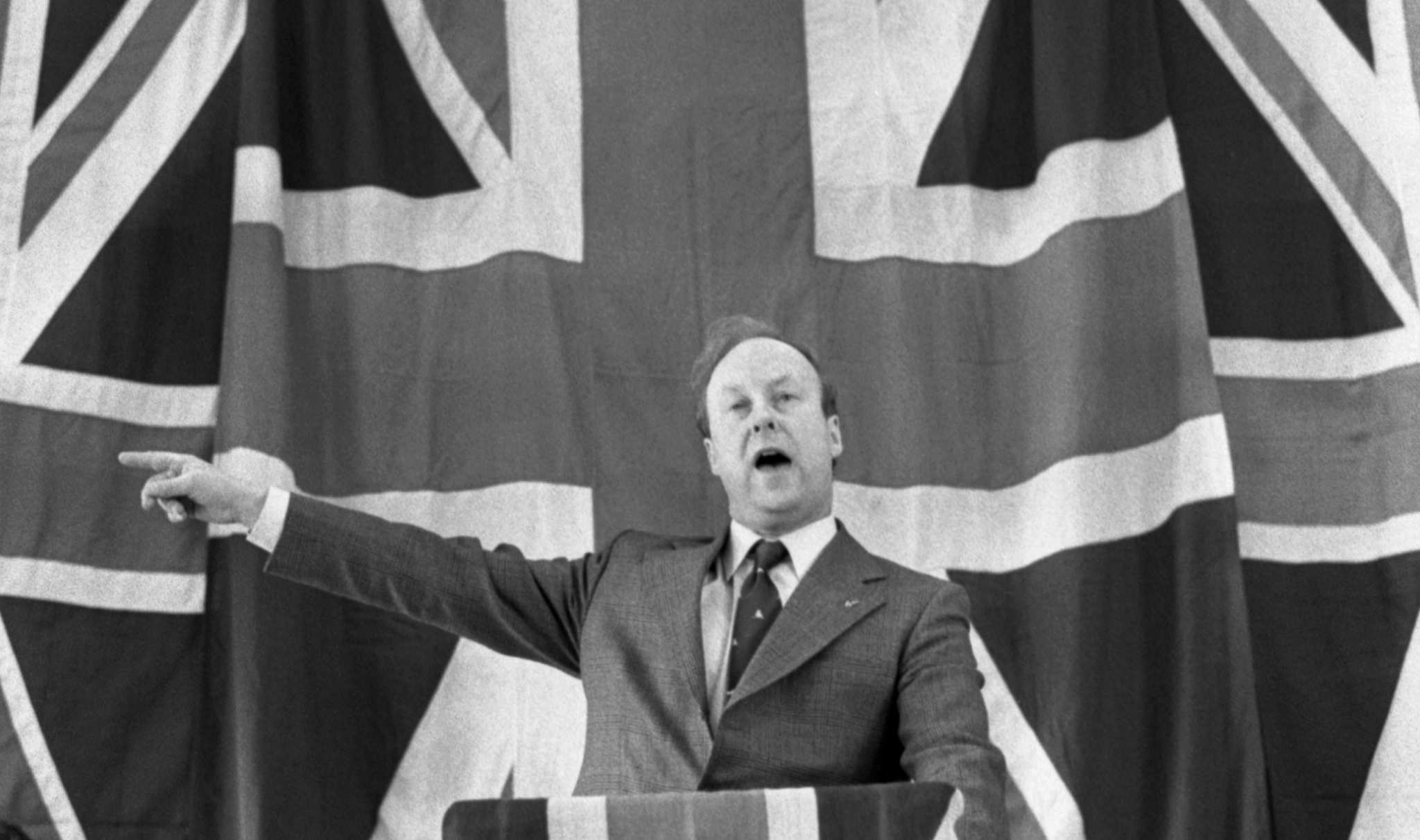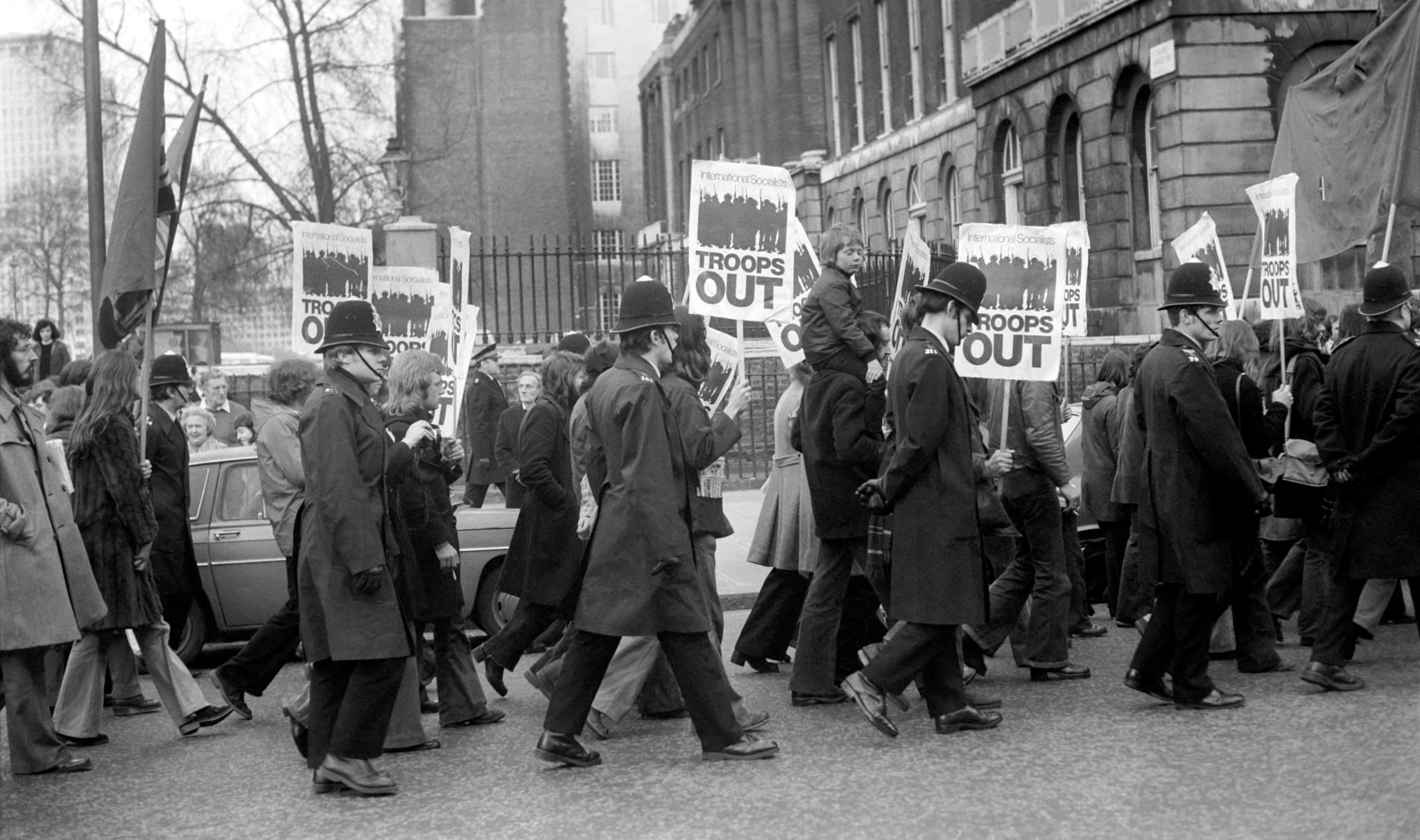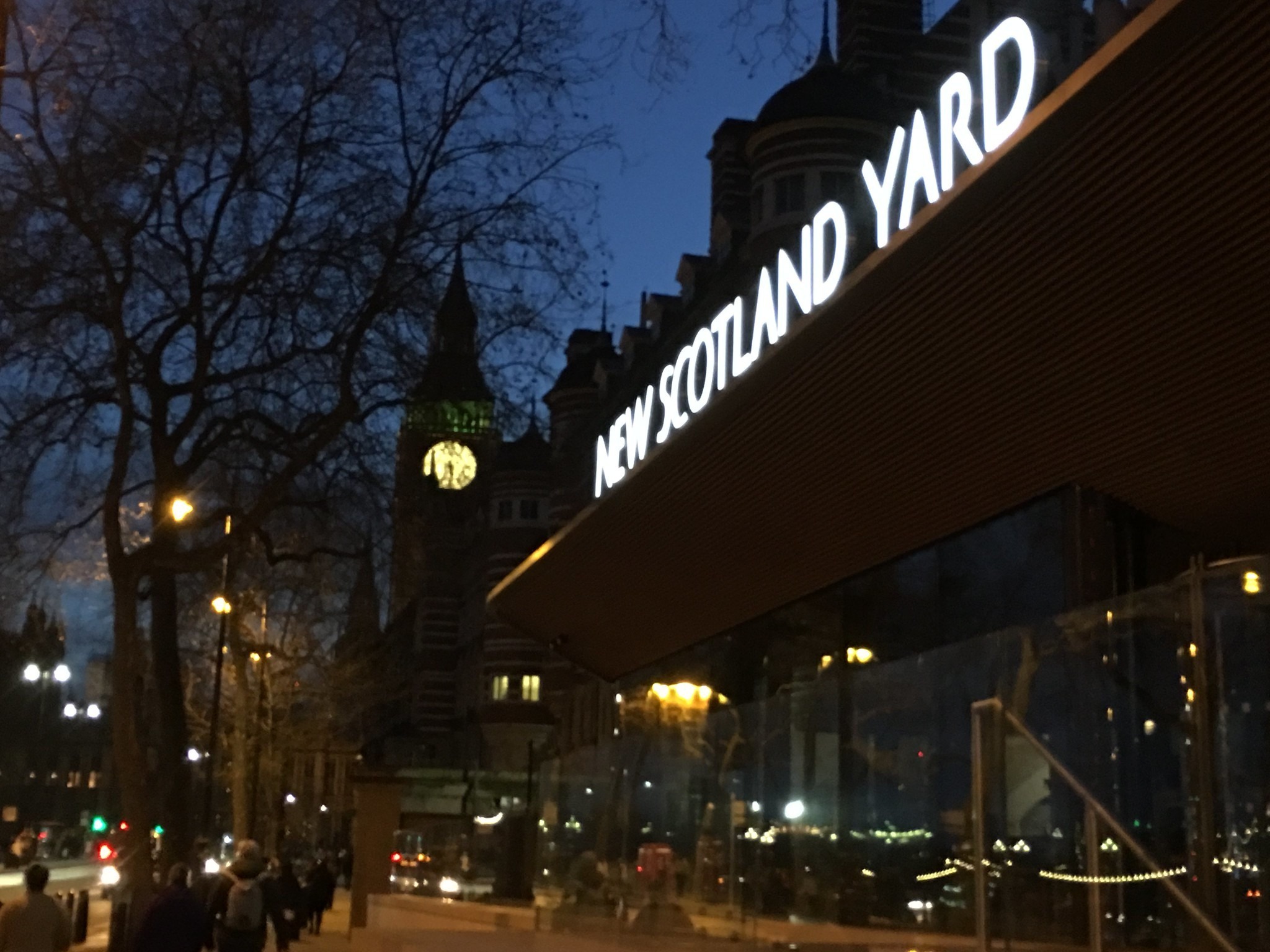The Undercover Policing Inquiry’s interim report is due to be released on Thursday, focusing on spying activities by the Special Demonstration Squad (SDS) of the Metropolitan Police during 1968-1982.
Documents released to the first part of spycops inquiry show the involvement of all parts of the state – from Special Branch to MI5, from senior civil servants to the Cabinet – in directing the work of the SDS.
This unit was established in July 1968 as a response to the growing movement in Britain against the US war in Vietnam. Undercover officers were sent into meetings of the Vietnam Solidarity Campaign to monitor key activists such as Tariq Ali. The justification was on the basis of a “public order requirement”.
But when the Vietnam war ended in the mid-1970s, the SDS, far from winding down, was transformed into an extensive surveillance operation targeting left-wing political groups.
The SDS shifted its focus away from alleged public order issues and increasingly served various “customers” such as Special Branch, MI5 and various government departments.
The clearest example of infiltration of campaigning organisations was that of the Socialist Workers Party (SWP).
40 years in the SWP
From 1968 onwards, the SDS sent 35 officers into the SWP primarily situated in London. Each officer served for a maximum of four years, indicating that at any given moment, there were likely more than six officers actively involved within the SWP’s ranks.
This arrangement persisted for a span of over 40 years. Most of the undercover officers assumed positions of authority at the branch, district or national level.
MI5 maintained a prolonged fascination with the progression of SDS officers within the SWP. It explicitly conveyed to the SDS management its desire for an undercover officer to be permanently embedded within the SWP headquarters.
“The undercover officers forged long-lasting relationships with SWP members”
Over an extended period, the undercover officers forged long-lasting relationships with SWP members, deceiving them into believing they were genuine friends and engaging in sexual relationships.
They infiltrated their homes, betraying the trust placed in them and exploiting these connections for the purpose of gathering intelligence. SDS reports reveal the extensive documentation of information about thousands of members.
This included details about their personal lives, and everything from physical appearances to occupations, from vacation plans to trade union affiliations.
Personal details
The extent of the reporting, as well as the number of individuals who were subject to files being opened on them, is truly remarkable. During the 1980 annual Easter Rally in Skegness, for example, the SDS compiled a list of over a 1,000 attendees from various parts of the UK.
Alongside each individual’s name, their addresses and, in the majority of instances, their Special Branch file numbers were meticulously recorded.
“The concern was never really about public order”
Earlier, at the SWP’s National Delegate Conference in 1978, a comprehensive list was also compiled, featuring just under 300 names accompanied by their addresses, trade union affiliations, educational institutions where SWP members were present and corresponding file references.
The report spanned 171 pages, containing meticulous analysis of administrative and financial matters.
Despite this documentation, there is a noticeable absence of any information directly related to public order issues. The concern was never really about public order. Infiltration was a political choice made by the British state to undermine campaigning socialist organisations.
Right to Work
The march to the Conservative Party conference organised by the Right to Work Campaign was a significant and highly visible annual demonstration organised from the late 1970s onward.
Supported by the SWP, but endorsed by hundreds of trade union branches and national executives, it highlighted the issue of mass unemployment and factory closures across the UK.
In the late 1970s up until 1984, the SDS had two officers in core positions in the Right to Work Campaign office – “Colin Clarke” and “Phil Cooper”. The latter, a serving Metropolitan Police officer, was in control of the campaign’s bank account.
In its 1980 Annual Report, the SDS attempted to take credit for allegedly thwarting “small events” along the march route of the campaign through its advance knowledge. It claimed its infiltration of the group enabled them to gather information and uphold public order.
But SDS internal reports consistently indicated that the march itself was not considered a major threat to public order. And they show that the SDS had no discernible impact on the occurrence of any disorder during the event.
After spending five years embedded within the SWP, “Colin Clark” underwent a thorough debriefing by MI5. He conceded that the SWP “strongly opposed government policies but did not seek to subvert state institutions”.
None of the individuals being monitored posed a threat to the nation’s security. The initial assessment of Roy Creamer, a detective sergeant in the SDS, stands true to this day: “While we were in search of information, there was simply nothing substantial to report… There were no concealed conspiracies or hidden activities taking place.”
The rise of the National Front
The 1970s saw the rise of the National Front, a neo-Nazi organisation that stood in parliamentary elections but also attempted to run the streets.
It organised demonstrations through working class communities with a high percentage of the Black and Asian community, the purpose being to embolden racists and to intimidate local people.
The actions of the National Front led directly or indirectly to an increase in racist attacks throughout London and Britain. Between 1975 and 1981, 51 black and Asian people were killed in suspected racist murders.
But whilst SDS managers were obsessed with infiltrating socialist organisations, they took a far different approach to the National Front.
The allocation of police resources could have been more effectively used to prevent and solve politically motivated crimes. Multiple requests were made, by the SWP and other organisations, urging the police to prioritise such efforts. However, they chose not to do so.
In September 1978, the secretary of the Brick Lane mosque in east London released a report titled “Blood on the Streets” which documented no less than 33 racially motivated assaults on the Brick Lane community during the first four months of 1978.
These included hammer attacks, stabbings, punctured lungs, and individuals being brutally beaten and rendered unconscious in broad daylight, often with bricks and sticks.
Despite clear evidence and even confessions indicating racial motivations behind these attacks, the police persisted in denying any such motive. Instead, they insinuated the prevailing sense of terror in local communities was somehow the result of actions by left-wing activists.
The 1979 Special Branch Annual Report acknowledges the killing of Altab Ali, who formerly worked at the Brick Lane mosque, in May 1978. The police’s choice of words to depict this murder is revealing.
It stated: “While this death cannot be attributed to a racially motivated attack, it was exploited by the radical left to further exacerbate an already declining situation within the Bengali community.”
No infiltration
Despite SDS officers being forced to defend themselves from National Front attacks when working undercover as members of the SWP, such incidents were seldom reported or commented on by SDS managers.
Indeed, Detective Inspector Angus McIntosh, one of those managers, recalled there was a “high level policy decision” not to infiltrate the National Front.
As a result the Metropolitan Police did not directly and of its own intention send any undercover officer into the National Front. Indeed only one officer ended up infiltrating the neo-Nazi group but that was purely by accident rather than design.
“There was a ‘high level policy decision’ not to infiltrate the National Front”
Undercover officer “Peter Collins” was originally sent by his senior officers to infiltrate the Workers Revolutionary Party (WRP). After a short while in the WRP he was then sent by them to infiltrate the National Front and the League of St George.
The SDS’ failure to infiltrate the National Front came despite knowing by 1975 that “most of the public order problems were concerned with the activities of the National Front.”
Indeed, Special Branch was fully aware of the involvement of National Front members in numerous vicious assaults targeting individuals from ethnic minorities. It was also aware these acts of brutality only intensified the resistance against the National Front.
Yet, at a time the SDS was targeting socialist organisations the police were even courting leading Nazi sympathisers.
Tea with the far-right
An intriguing document has surfaced in the inquiry regarding the Chief Superintendent of Special Branch who directed two senior officers from the SDS to arrange a meeting with Lady Jane Birdwood at her residence in 1968.
Lady Birdwood was well-known to Special Branch due to her staunch far-right activities. Over time, she became intermittently associated with organisations such as the National Front, the British Movement and the British National Party.
She was also the far-right candidate in three elections before eventually being convicted of multiple offences related to incitement of racial hatred.
Yet SDS officers indulged her, not only thanking her for the information she provided, but also asking her to keep in touch with the Special Branch. The visit illustrates Special Branch’s willingness to reach out to a known fascist and antisemite.
It is apparent the police intended to do nothing about far-right violence. The SDS Annual Reports also consistently overlook the significant efforts made by the SWP in promoting positive strategies to undermine fascist movements.
Examples included organising estate residents to remove National Front graffiti, establishing telephone networks for mutual support and early warnings against racist attacks, as well as creating protection rotas to ensure the safety of minority residents.
Paul Heron is the senior solicitor at the Public Interest Law Centre




